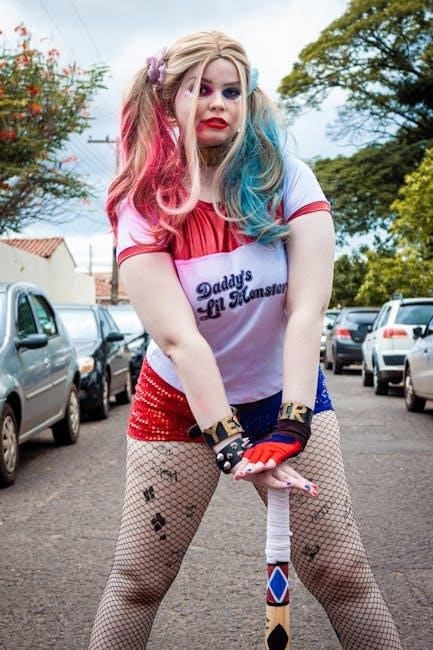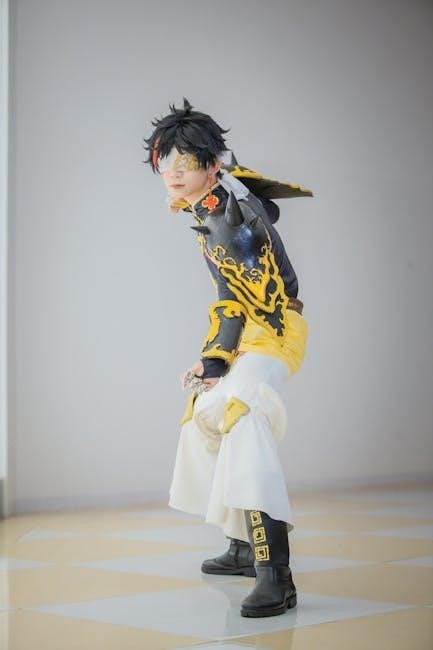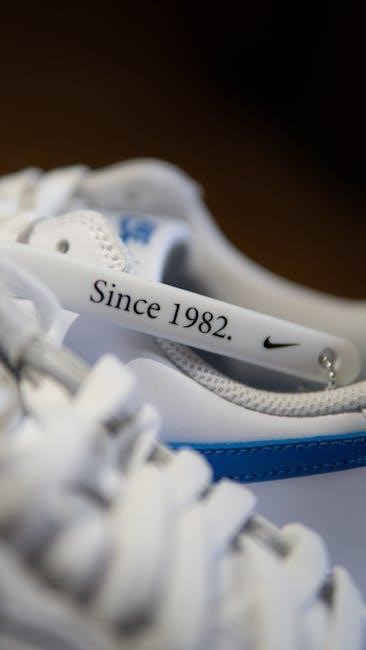The 1982 DC Comics Style Guide, created by José Luis García-López, is a 268-page hardcover reissued in 2025, featuring character designs and visual guidelines, now a sought-after collector’s item essential for DC’s branding consistency.
Overview of the Style Guide
The 1982 DC Comics Style Guide is a comprehensive resource that standardizes the visual identity of DC’s iconic superheroes and characters. Originally created in 1982, it serves as a blueprint for maintaining consistency in character designs, logos, and overall branding across various media. The guide features detailed illustrations, color palettes, and specific artistic guidelines to ensure uniformity in how characters like Superman, Batman, and Wonder Woman are portrayed. Its reissue in 2025, reproduced from rare original copies, includes 187 high-quality scans, making it a valuable collector’s item for fans and professionals alike. The guide’s meticulous attention to detail reflects DC’s commitment to preserving the recognizable and timeless look of its legendary roster of characters.
Purpose and Importance
The 1982 DC Comics Style Guide was developed to ensure a consistent visual identity for DC’s iconic characters across all media and licensing opportunities. Its primary purpose was to provide artists, marketers, and licensees with a unified framework for depicting characters like Superman, Batman, and Wonder Woman. This consistency helped maintain brand recognition and strengthened DC’s identity in the competitive comic book industry. The guide’s importance lies in its role as a foundational resource for creating cohesive and recognizable character designs, which directly impacted DC’s licensing and marketing efforts. Its reissue in 2025 has made it accessible to modern fans and professionals, underscoring its enduring relevance in preserving DC’s artistic legacy;

Origins and Creation
The 1982 DC Comics Style Guide, created by José Luis García-López, standardized character designs to ensure consistency across DC’s universe. Its 2025 reissue by Standards Manual revived this iconic resource.
Who Created the Style Guide?
The 1982 DC Comics Style Guide was primarily created by José Luis García-López, a celebrated Spanish comic book artist. García-López, known for his meticulous attention to detail and iconic character designs, was tasked with developing a unified visual identity for DC’s superheroes. His work laid the foundation for consistency in how characters like Superman, Batman, and Wonder Woman were depicted across various media. The style guide became a critical resource for artists, licensors, and marketers, ensuring that DC’s characters maintained a cohesive and recognizable appearance. García-López’s contributions were instrumental in shaping the visual legacy of DC Comics, making the 1982 Style Guide a seminal work in the industry.
Why Was It Developed?
The 1982 DC Comics Style Guide was developed to establish a consistent visual identity for DC’s iconic superheroes. This initiative aimed to ensure that characters like Superman, Batman, and Wonder Woman were depicted uniformly across all media, including comics, merchandise, and licensing partnerships. The guide was a response to the growing need for brand cohesion, as DC Comics expanded its reach into new markets and collaborations. By standardizing character designs and visual elements, the style guide helped maintain the integrity of DC’s intellectual properties and strengthened their global recognition. It also served as a valuable resource for artists, marketers, and licensees, ensuring that DC’s characters were represented accurately and cohesively worldwide.

Key Features of the Style Guide
The 1982 DC Comics Style Guide includes detailed character design standards and visual identity guidelines, ensuring consistency in depicting iconic superheroes across various media and licensing opportunities.
Character Design Standards

The 1982 DC Comics Style Guide established precise standards for character designs, ensuring consistency across DC’s universe. It featured detailed illustrations by José Luis García-López, providing clear visual references for iconic heroes like Superman, Batman, and Wonder Woman. The guide included specifications for character proportions, costumes, and facial expressions, ensuring uniformity in depictions across comic books, merchandise, and licensing partnerships.
These standards were crucial for maintaining the recognizable identities of DC’s superheroes. By standardizing character designs, the guide helped licensees and artists accurately represent the characters, reinforcing DC’s brand and visual legacy. This meticulous approach ensured that the iconic looks of DC’s heroes remained consistent and timeless.
Visual Identity Guidelines
The 1982 DC Comics Style Guide outlined strict visual identity guidelines to maintain a cohesive brand image. It specified color palettes, typography, and logo usage, ensuring consistency across all DC Comics media. The guide emphasized uniformity in character depictions, logo placements, and overall visual aesthetics, helping to reinforce DC’s brand identity. These guidelines were essential for licensing and marketing, ensuring that DC’s iconic characters, such as Superman and Wonder Woman, were represented consistently across various platforms. By standardizing visual elements, the guide played a pivotal role in establishing DC Comics as a recognizable and formidable brand in the industry.
Impact on DC Comics
The 1982 DC Comics Style Guide significantly influenced DC’s visual consistency, unifying character designs and brand identity, which strengthened DC’s presence and recognition in the comic book industry.

Standardization of Superheroes
The 1982 DC Comics Style Guide played a pivotal role in standardizing the visual representation of DC’s iconic superheroes. By providing detailed character design templates, the guide ensured consistency across comic books, merchandise, and licensing. This uniformity helped maintain the recognizable and iconic looks of characters like Superman, Batman, and Wonder Woman. The guide’s strict adherence to specific artistic standards streamlined the creative process, ensuring that DC’s heroes were depicted cohesively across all media. This standardization not only strengthened DC’s brand identity but also simplified collaboration with external partners, making it easier to adapt characters for various formats. The guide’s influence extended beyond comics, shaping how superheroes were portrayed in animation, film, and other media, cementing their status as cultural icons. Its impact remains evident in modern DC Comics, ensuring a timeless and unified visual legacy for its characters.
Influence on Licensing and Marketing
The 1982 DC Comics Style Guide significantly influenced licensing and marketing efforts by providing a unified visual identity for DC’s characters. This consistency enabled licensees to maintain a cohesive look across merchandise, ensuring brand integrity. The guide’s detailed specifications for character designs, logos, and color schemes became a critical resource for marketers, allowing them to create recognizable and appealing products. Its impact extended to cross-promotions, ensuring that DC’s heroes were depicted accurately in films, TV shows, and other media. The guide’s standardized approach enhanced the marketability of DC’s intellectual property, making it easier to adapt characters for various formats. This streamlined process not only boosted licensing opportunities but also strengthened DC’s global brand presence, ensuring that its iconic characters remained visually consistent and universally recognizable. The guide’s influence continues to be felt in modern licensing strategies and marketing campaigns.
Legacy and Relevance
The 1982 DC Comics Style Guide remains a foundational resource for artists and designers, influencing modern comic creation and maintaining consistent character designs across DC’s universe.
Modern Reissues and Collectibility
The 1982 DC Comics Style Guide has gained significant attention in recent years due to its reissue by Standards Manual in collaboration with Warner Bros. This meticulously reproduced hardcover, priced at $95, features 187 detailed scans and serves as a collector’s dream. The reissue has sparked excitement among fans and professionals alike, highlighting its enduring relevance. Originally intended for licensees, the guide has evolved into a cherished collector’s item, showcasing iconic character designs by José Luis García-López. Its historical importance and artistic value make it highly sought after, bridging the gap between vintage and contemporary comic art. The reissue ensures that future generations can appreciate the foundational visual standards that shaped DC Comics’ legacy.
Continued Influence on Contemporary Comics
The 1982 DC Comics Style Guide remains a cornerstone of modern comic art, inspiring creators with its timeless character designs and visual consistency. Its reissue has reintroduced José Luis García-López’s iconic style to a new generation, influencing contemporary artists in both physical and digital media. Many modern DC Comics adaptations, from film to animation, draw inspiration from the guide’s foundational visual language. It serves as a reference for maintaining character integrity while allowing for fresh interpretations. The guide’s emphasis on uniformity and detail has set a benchmark for modern storytelling, ensuring that classic DC heroes remain recognizable and beloved. Its influence extends beyond comics, shaping merchandise and licensing, making it an enduring resource for the industry. This legacy underscores its importance in preserving DC’s visual identity while evolving with the times.

